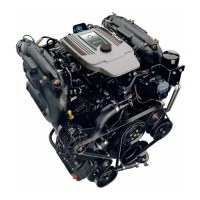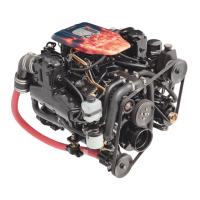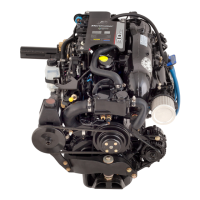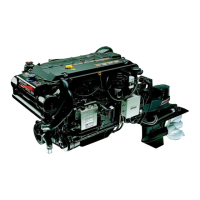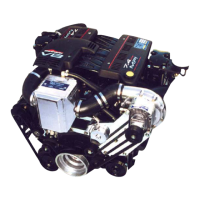Section 5 - Maintenance
Page 76 90-899883179 OCTOBER 2007
9. Depress the throttle only button and slowly advance the throttle until the engine reaches
1300 RPM (± 100 RPM).
10. Observe the water temperature gauge to ensure that the engine is operating in the
normal range.
11. Operate engine with sterndrive in neutral for about 10 minutes or until discharge water
is clear.
12. Slowly return throttle to idle speed position.
13. Stop engine.
14. Shut off water and remove flushing attachment.
15. Remove the seawater inlet hose from the seawater pump and plug the hose to prevent
water from siphoning into the engine.
16. Tag the ignition switch with an appropriate tag requiring the seawater inlet hose to be
reconnected prior to operating engine.
Alternative Water Pickups
IMPORTANT: Two water sources are needed for this procedure.
NOTE: Flushing is needed only for salty, brackish, mineral laden or polluted water
applications. Flushing is recommended after each outing for best results.
IMPORTANT: Engines with the sterndrive water inlet blocked off at the gimbal housing and
using a through the hull water inlet need a supply of cooling water available to both the
sterndrive unit and to the engine during operation.
1. If flushing the cooling system with the boat in the water:
a. Raise sterndrive unit to trailer position.
b. Install the appropriate flushing attachment over the water inlet holes in the gear
housing.
c. Lower sterndrive unit to full down/in position.
2. If flushing the cooling system with the boat out of the water:
a. Lower sterndrive unit to full down/in position.
!
WARNING
Rotating propellers can cause serious injury or death. Never operate the boat out of the
water with a propeller installed. Before installing or removing a propeller, place the drive
unit in neutral and engage the lanyard stop switch to prevent the engine from starting.
Place a block of wood between the propeller blade and the anti‑ventilation plate.
b. Remove propeller.
c. Install the appropriate flushing attachment over the water inlet holes in the gear
housing.
3. Connect hose between flushing attachment and water source.
4. Close the seacock, if equipped, to prevent water from siphoning into the engine or boat.

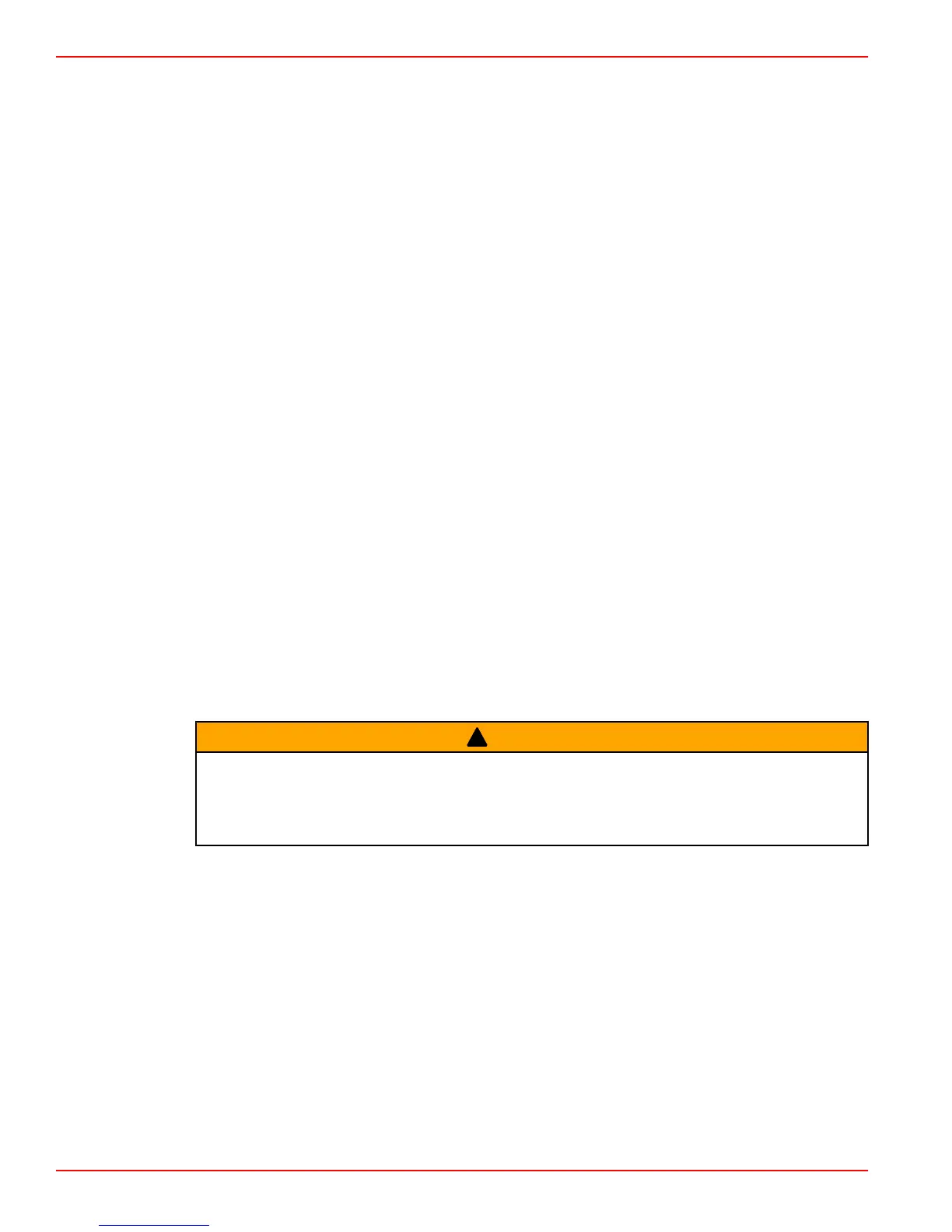